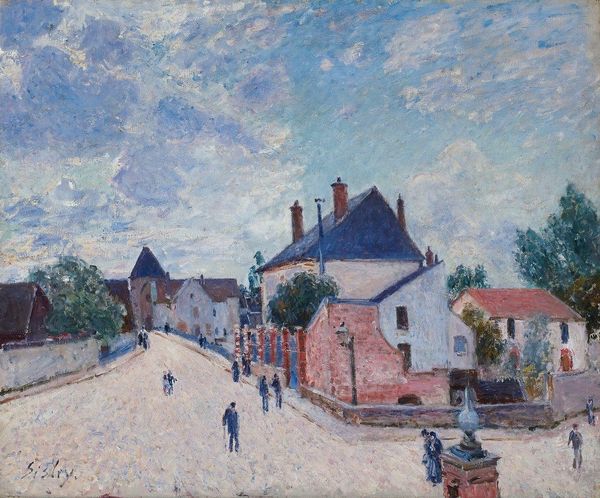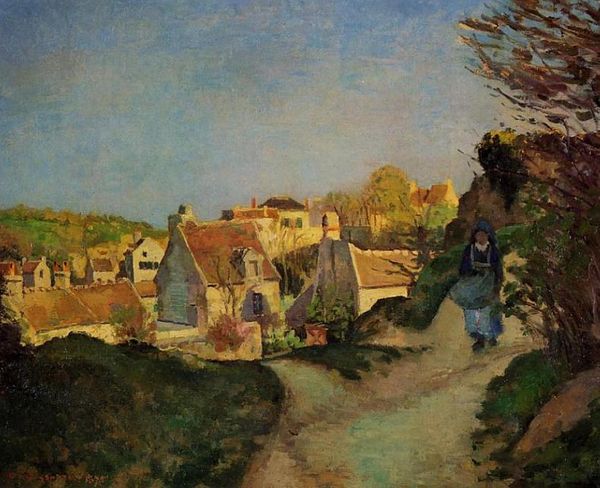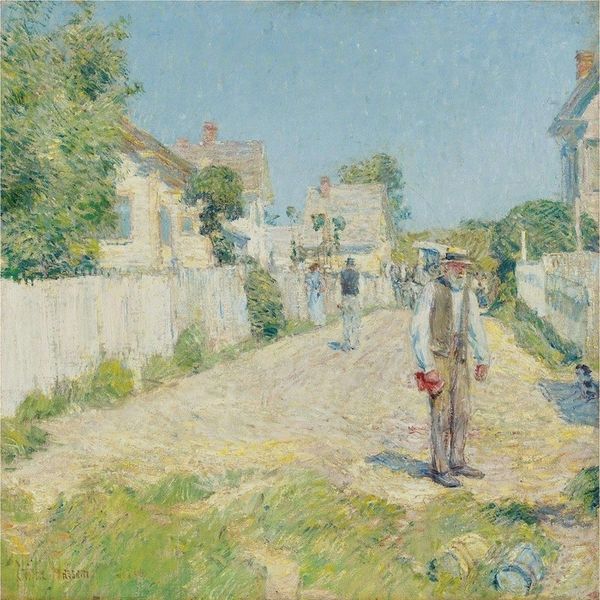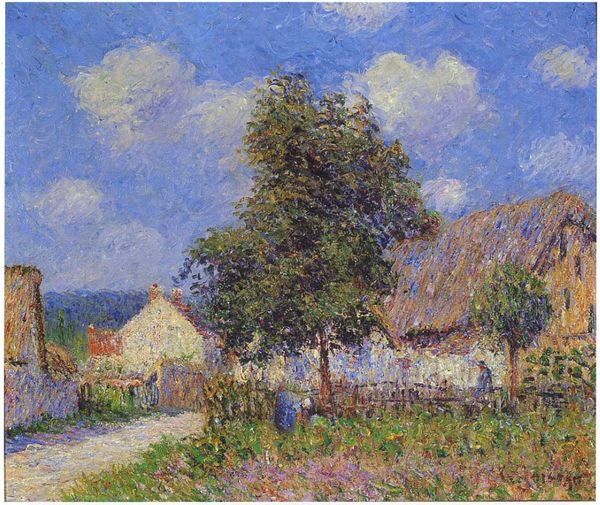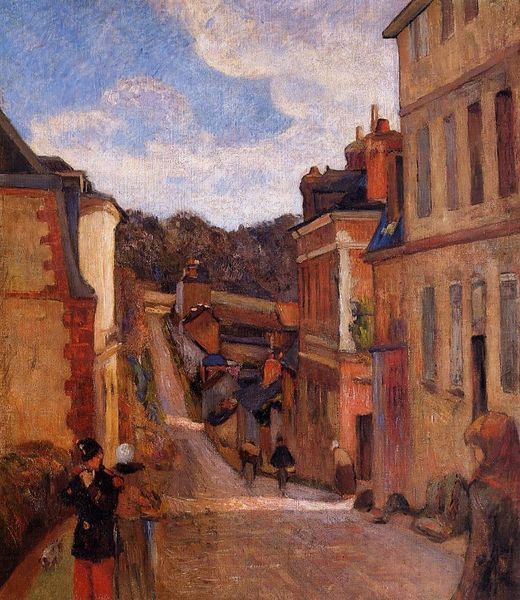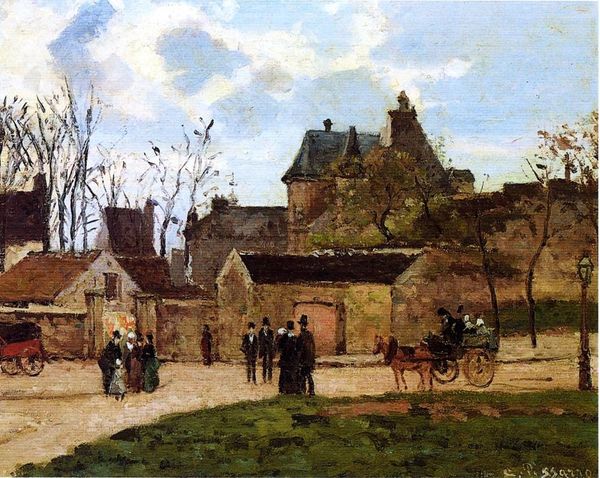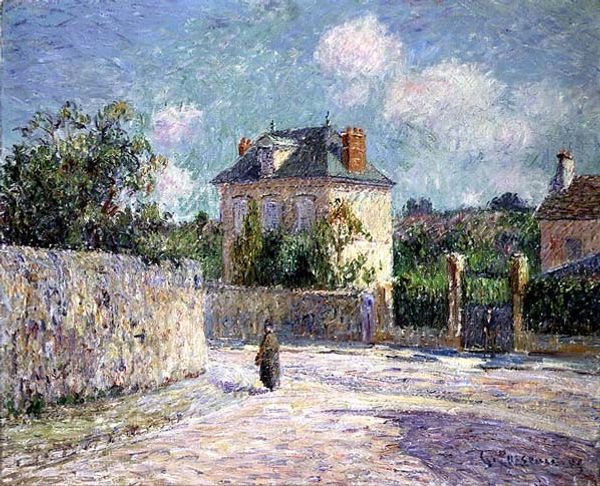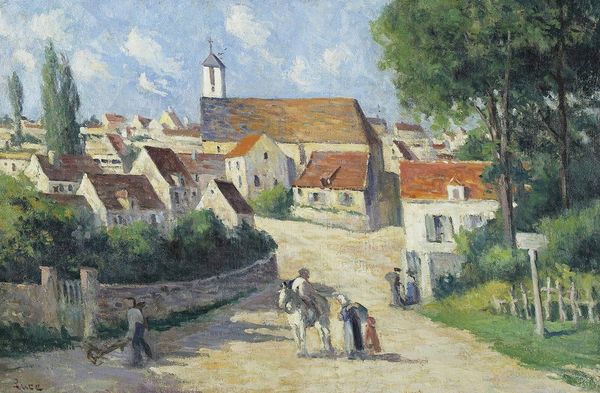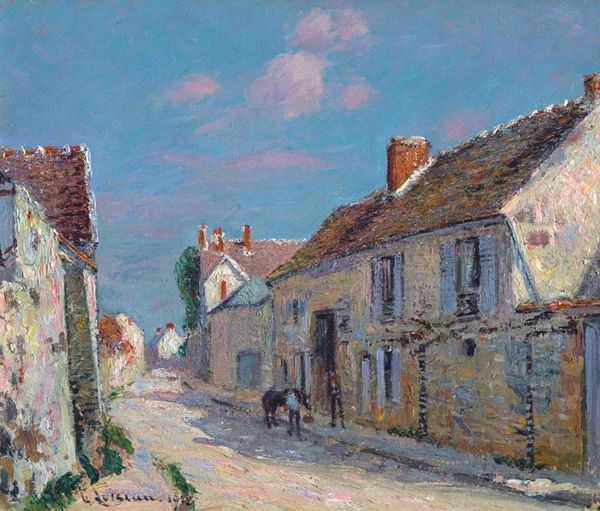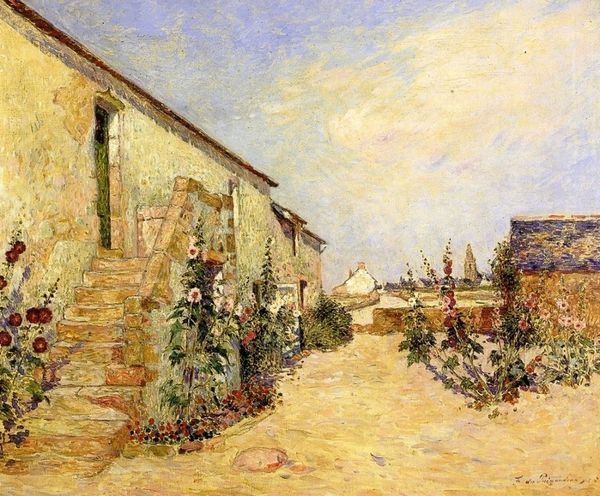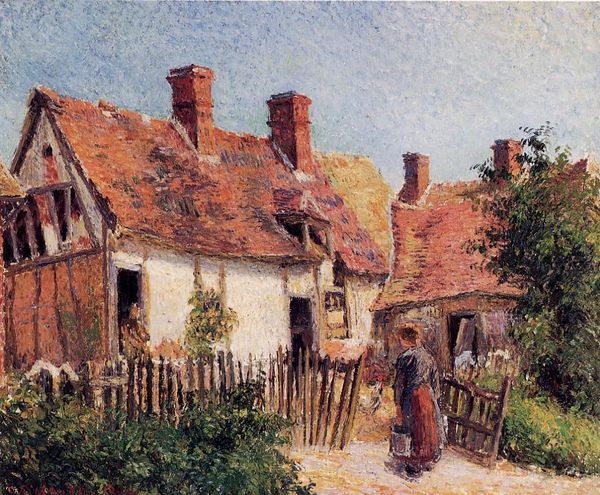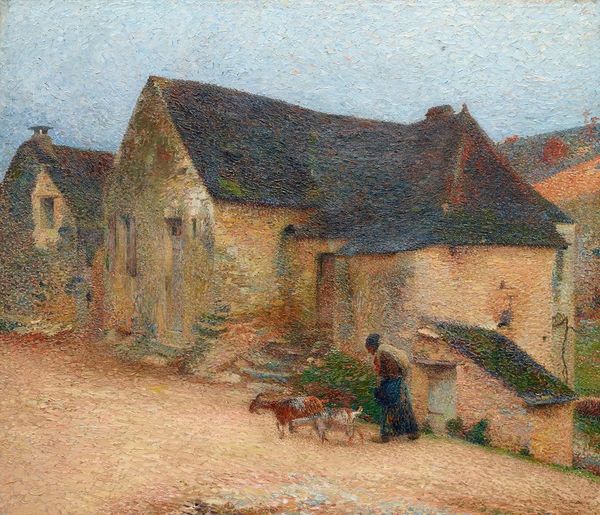
painting, plein-air, oil-paint
#
portrait
#
painting
#
impressionism
#
impressionist painting style
#
plein-air
#
oil-paint
#
landscape
#
impressionist landscape
#
oil painting
#
cityscape
#
genre-painting
#
modernism
#
realism
Copyright: Public domain
Curator: Camille Pissarro’s "A Street in Pontoise," completed in 1879, presents us with a vibrant depiction rendered with oil paint, currently held in a private collection. Editor: My first impression is a feeling of sun-drenched tranquility, a slow pace of life distilled into this little slice of the French countryside. The light is wonderful. Curator: Note the careful arrangement of forms, how the street itself functions as a receding diagonal, pushing our eye deeper into the pictorial space. The verticality of the lamp post anchors the left side, providing a necessary counterweight. Editor: Yes, but what intrigues me is the image of the figure walking away from us, basket in hand. This archetype appears throughout art history; here, it evokes the peasant figure linked to labor, echoing Millet's work and suggesting a deep connection to the land and simple life. Curator: A crucial element lies in the application of color. Pissarro’s short, broken brushstrokes create a shimmering effect, destabilizing fixed form and drawing attention to the act of painting itself. This technique serves to deny illusionistic depth. Editor: And isn't there a suggestion of a turning point in the work? I sense how people sought solace and permanence in the French countryside amid social transformation. This artwork may suggest the strength and enduring presence of tradition in a quickly evolving society. Curator: While that may be present as an interpretive element, what matters more is the objective reality of the artist’s brushstroke. We need to look closely at how Pissarro’s impasto builds up on the canvas. Editor: Agreed, yet Pissarro gives us more than just visual data. Even those touches of pure color create this vibrant yet calming atmosphere. Curator: Pissarro masterfully uses a range of greens, blues, and creams—these are objectively discernible features—to create both structure and light within the scene. It is self-referential and acknowledges its status as pigment. Editor: The scene may prompt questions concerning identity, the role of individuals in society, and the allure of simpler times within us as viewers. Curator: Interesting considerations. Looking at it this way does create an emotional connection, not purely structural. Editor: Absolutely, there are countless aspects one can enjoy!
Comments
No comments
Be the first to comment and join the conversation on the ultimate creative platform.
